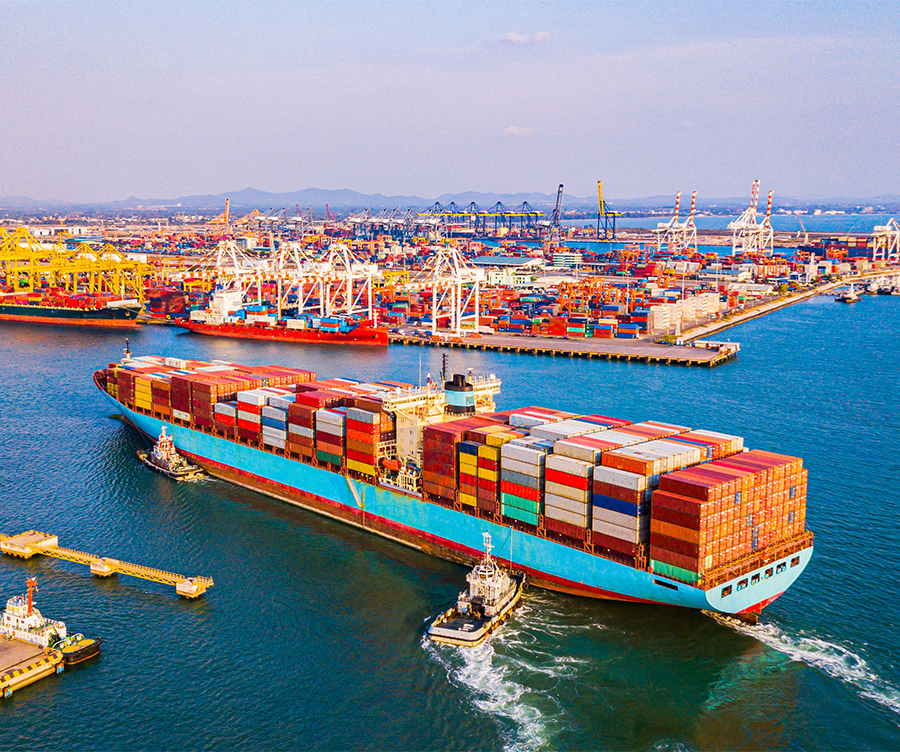ISLAMABAD: The trade deficit of Pakistan has expanded beyond $39 billion in 10 months of the ongoing fiscal year. In percentage, the trade deficit widened by 65 per cent year-on-year and amounted to $39.3 billion during July 2021 to April 2022.
According to the latest data of Pakistan Bureau of Statistics, the trade deficit has been on the rise because of an unprecedented increase in imports amid rising global commodities prices, whereas exports stagnated around $2.5 billion to $2.8 billion a month. In April this year the trade deficit increased to $3.74 billion, 24pc higher when compared to April 2021.
The trade deficit reached an all-time high of $37.7bn in the 2017-18 fiscal year. However, the government’s measures led to a drop in it to $31.8bn the next year (2018-19) and then a further decline to $23.2bn in 2019-20.
However, the trend then reversed and the trade gap jumped to $30.8bn in the 2020-21 fiscal year and is expected to reach an all-time high during the ongoing fiscal year.

In the first 10 months (July 2021 to April 2022) of this fiscal year, the import bill rose 46.4pc to $65.5 billion from $44.7 billion over the same period last year. Thus, in 10 months of the ongoing fiscal year, the trade deficit has increased by $20.70 billion in comparison with the corresponding period of the last financial year.
In April alone, the import bill edged up to $6.6bn from $5.24bn over the same month last year, reflecting an increase of around 26pc. On a month-on-month basis, the imports increased by 3pc in April.
A major initiative of the government to encourage raw material imports and rising global oil prices and its high demand at home pushed up the import bill.
A surge was also noted in the import of vehicles, machinery and vaccines. The government is also importing wheat and sugar and costly palm oil. In the 2020-21 fiscal year, the import bill surged 26pc to $56bn from $44.6bn a year ago.
Exports
In July-April, exports jumped 25.5pc to reach $26.2bn from $20.9bn over the corresponding months last year. In April, exports grew 29.5pc to $2.87bn from $2.21bn a year ago.
On a month-on-month basis, exports increased by 3.27pc in April.
Export proceeds went up by 18pc to $25.3bn in 2020-21 from $21.4bn over the last year.
The government has projected the annual export target for commodities at $31.2bn and services at $7.5bn.
According to the finance ministry’s monthly economic update and outlook for April, “exports are expected to continue their upward trend, backed by the export-friendly policies that have been implemented”.
It said exports also benefited from the real effective exchange rate (REER), which measures a currency’s value weighted against those of its major trading partners after adjusting for inflation.
According to the report, the exports of goods and services expressed in US dollars have been increasing since mid-2020. This was followed by the reopening of domestic and external economies after Covid-induced lockdowns.
With further domestic and international relaxing of protective measures against the pandemic, Pakistan’s exports benefited from a largely depreciated normal effective exchange rate. It compensated for the differential between inflation in Pakistan and in its main trading partners, the report said.
Domestic economic expansion and the positive trend in exports, as well as the historically strong surge in international commodity prices, have also brought imports on an upward trajectory since mid-2020.
The government’s main challenge is to expand the share of exports in domestic gross value-added creation and to limit the further expansion of the share of imports to reduce the trade balance.
The monetary policy tightening as well as measures taken to limit unnecessary imports may bring correction to the external sector imbalance in short to medium term.
Since mid-2020, remittances have fluctuated around a monthly average of $2.5bn. In April, it is expected that remittances may surge on account of Eidul Fitr. However, geopolitical risks are still not over. Thus, the import of goods and services may continue to show a rising trend mainly due to the rise in international commodities prices, the report said.










